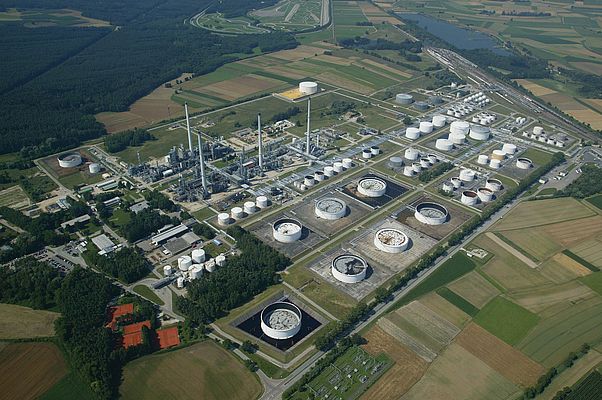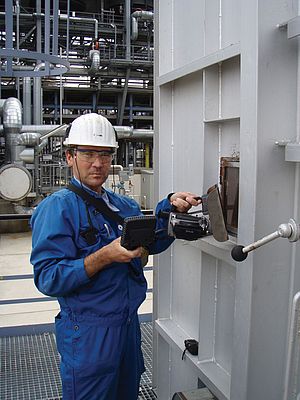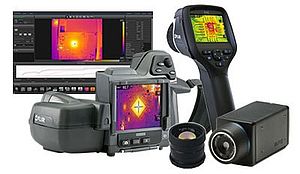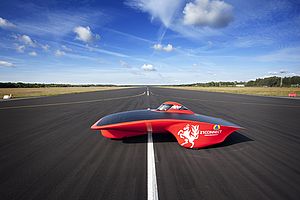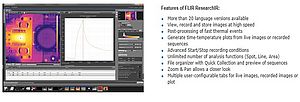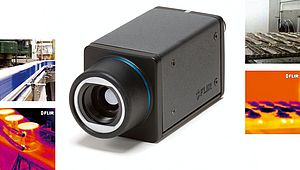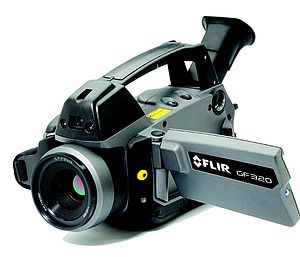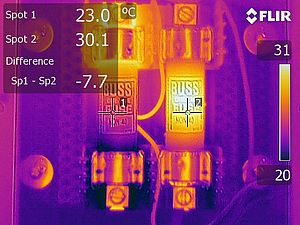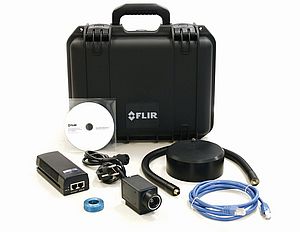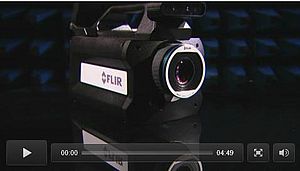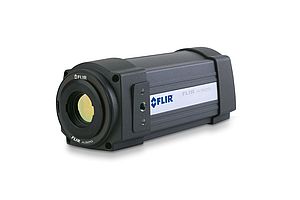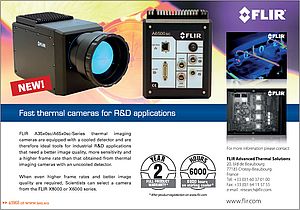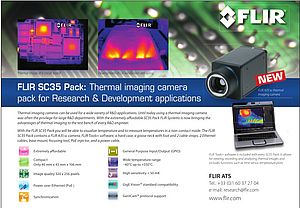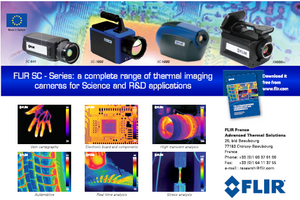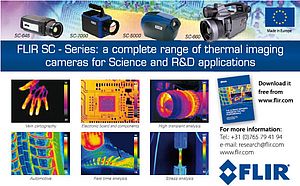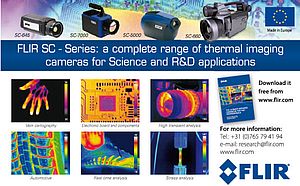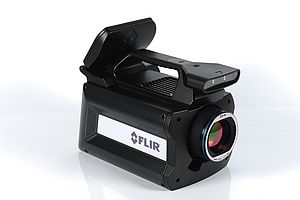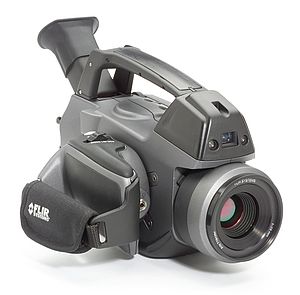Stable high temperatures and efficient combustion in refinery furnaces, heaters and boilers are mandatory for a continuous output of high-quality oil derivates. An Infrared camera for industrial high temperature applications in hazardous areas has been developed by Flir to keep these installations up and running efficiently.
Installations at Bayernoil run at 24/7 and at 100% capacity to satisfy the current high demand for petroleum products. Hence the major importance of condition monitoring and preventive maintenance of furnaces and heat supply. Super grade petrol and light fuel are the result of a reforming process; after desulphurisation, the refined oil passes into the hydroreformer for a chemical process during which low-octane petrol is converted into high-octane products by stripping the hydrogen out of the hydrocarbons or rearranging the composition of hydrocarbon molecules respectively. The reformer reactors need a constant, 2 /7 supply of heat of up to 510 ºC, which is provided by furnaces and carried by heat piping systems.
Inspecting high temperature areas
While high temperature thermo elements only allow to measure exactly but very locally, infrared inspection over large surfaces enables to quickly check important parameters for a clean and safe production: are coking, dirt or oxide layers lowering the process temperature? What is the overall operating temperature inside? What is the effect on the surface walls?
Bayernoil has procured an infrared camera from Flir designed to inspect industrial furnaces, heaters and boilers. The camera ios built to allow looking through flames. Calibrated for measurements of up to 1,500 ºC , the camera provides temperature reading across entire high-temperature surface areas, enabling a faster inspection in critical or potentially hazardous environments.
"The reformers are grateful objects to inspect", says Holger Springer, Inspection Engineer at Bayernoil's maintenance department and infrared camera user. "We use the cavity effects in the oven for a clear temperature readout", says Springer, who has a certification provided by the ITC, an independent, ISO-certified worldwide acting training institute.
Springer regularly inspects the 26 mostly different types of furnaces at the three Bayernoil sites. The furnace camera's protecting shield not only reflects the heat away from the camera and its user, but also entirely covers the size of the furnace's inspection windows.
The furnace camera can also be used to inspect the refractory in the outside walls of the furnaces. The inbuilt visible camera can be used to check the clean flame pattern inside the furnace, which proves the quality of the combustion process, and also to prevent flame impingement across the walls of the tubes. Contributing to production and safety Springer uses the Flir Reporter software suite to gather and analyze his findings and to share them with the process safety, production and maintenance specialists of the plants, as different operational entities within the refinery are interested in measurement results to assess and optimize production.
The info gathered by the furnace camera on the thermal situation enables to:
- determine when temp sensors need to be exchanged
- indicate If the temperature of the piping stays within acceptable limits
- provide information if productivity can be raised
- assess the condition of the burners to determine whether they have to be adjusted or cleaned
In an industrial environment where production capacity is often determined by piping temperature thresholds, the infrared cameras create additional demand: Holger Springer is often called to inspect other installations and piping at the site.
"The furnace camera, gives key information on the thermal load of furnace and piping installations. As such, it finds weak spots in our plants and contributes to operational safety of our furnaces" says Holger Springer, who expects the infrared camera to be amortized within two years.



